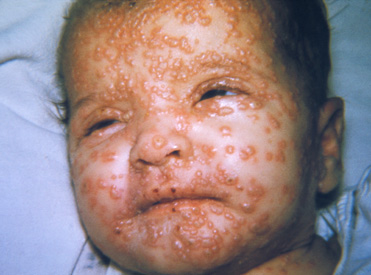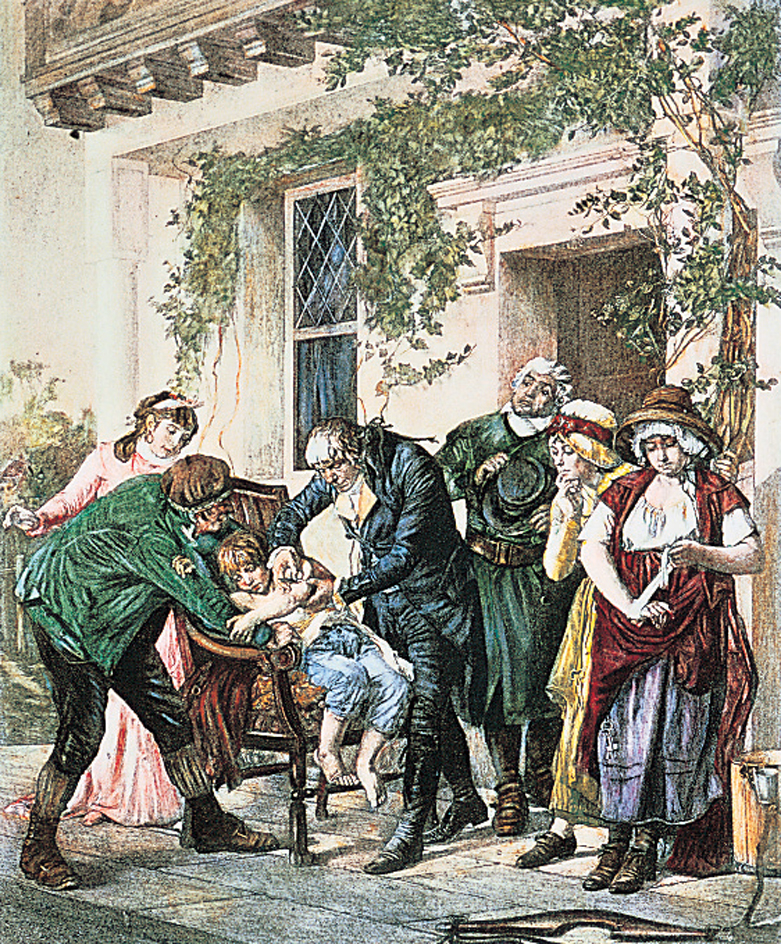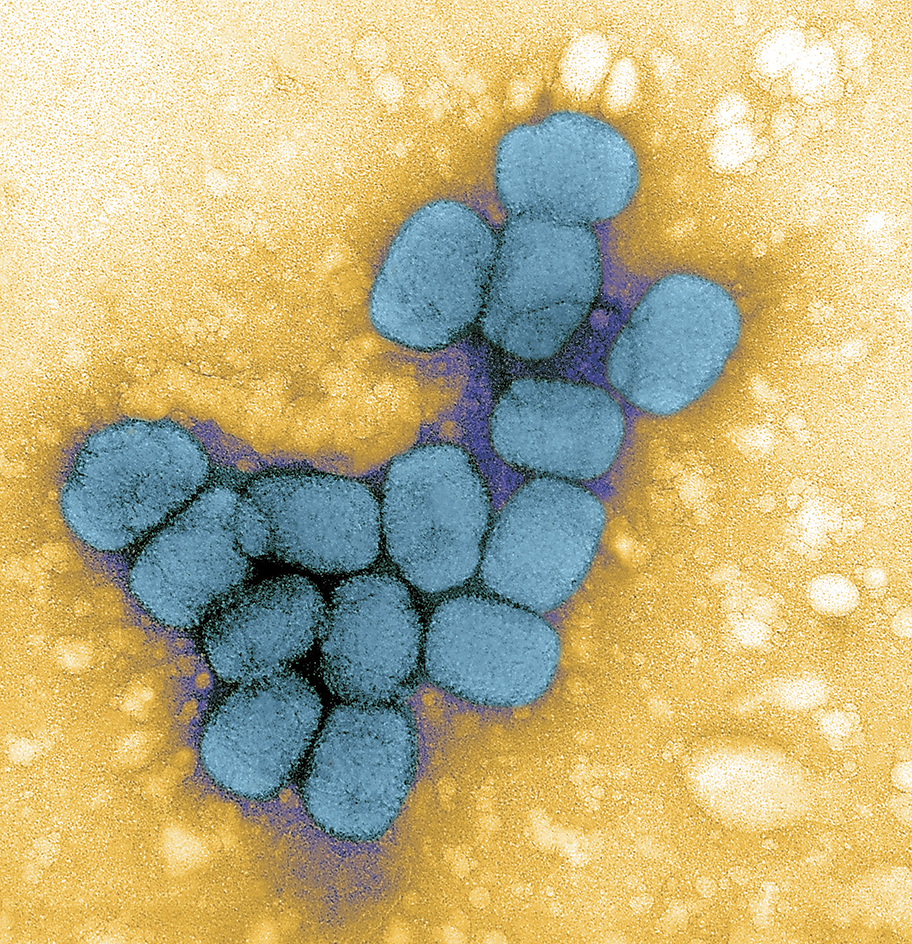Smallpox has been one of the most feared diseases in history. Scientists believe that, in the 1900’s alone, smallpox killed more than 300 million people. It scarred and blinded millions more. Smallpox is also the first and only disease completely eradicated (eliminated) from nature by human beings.

Smallpox was caused by a virus called Variola major. It spread from person to person through the air. A smallpox victim expelled droplets containing the virus from the nose and mouth. Another person inhaled the droplets and became infected. In most cases, aches and a high fever appeared in the new patient 10 to 12 days later. Two to four days later, a rash appeared on the face and spread to other parts of the body. The rash resembled thousands of small pimples. The pimples—called pustules—soon became larger, painful, and filled with pus. Historically, the pustules were called pox, leading to the name smallpox. In the following days, scabs would form over the pustules. The scabs eventually fell off three or four weeks later.
In 1796, British physician Edward Jenner developed the first vaccine—one that prevented smallpox. Its use quickly spread to other parts of the world. The disease continued to exist almost everywhere until the 1940’s, when it was eliminated in Europe and North America by use of an improved vaccine. The last case of smallpox in the United States occurred in 1949. Until 1971, most children in the United States were vaccinated as infants and again after five years.

In 1967, the World Health Organization (WHO) began a program to eradicate smallpox. At that time, the disease still occurred in Africa, Asia, and South America. WHO vaccination teams traveled from village to village and searched from home to home for smallpox cases. Infected people were isolated, and everyone who had been in contact with them was vaccinated. The last known case of naturally occurring smallpox was found in Somalia in October 1977. In 1980, WHO formally announced that smallpox had been eliminated, and vaccination throughout the world was stopped.
While the disease was eliminated in nature, many laboratories still had stocks of smallpox virus. A WHO committee recommended that all laboratories destroy their stocks or transfer them to one of two laboratories in the Soviet Union (now Russia) and the United States. Stocks of smallpox virus in the Soviet Union, however, were used to create biological weapons. The Russian government has since ended such biological weapons programs.
Historians believe that in 1763 smallpox was used as a biological weapon by British forces in North America during the French and Indian wars (1689-1763). The British distributed blankets that had been used by smallpox victims, to cause outbreaks among Native Americans. Devastating epidemics occurred in the years that followed.
Experts believe that the deliberate use of smallpox virus as a biological weapon remains possible. In 2002, the United States began to vaccinate health care workers and members of the military to protect them from a possible attack with smallpox. Public health agencies also developed plans to respond to such an attack. The plans included a strategy for the administration of vaccinations among the general public.

Smallpox vaccine also provides protection against a closely related disease called mpox. This viral disease occurs in animals in tropical rain forest areas of Central and West Africa. Mpox is sometimes transmitted to human beings from contact with squirrels, monkeys, and other animals that are hunted for food. In human beings, mpox is fatal in about 10 percent of all cases. However, health officials do not recommend widespread smallpox vaccination to protect people from mpox.
See also Chemical-biological-radiological warfare (CBR); Fenner, Frank John
